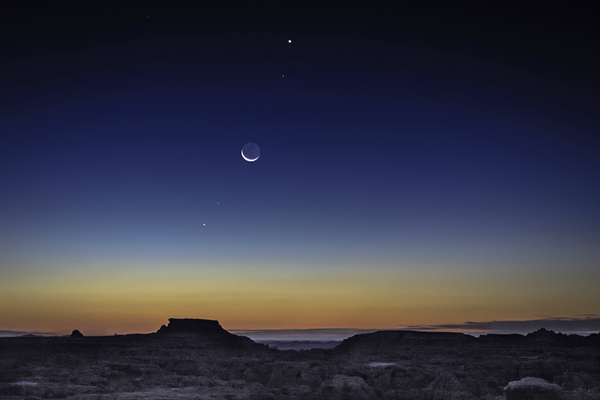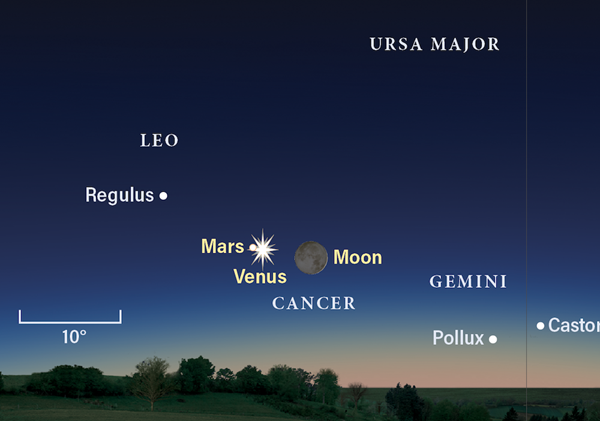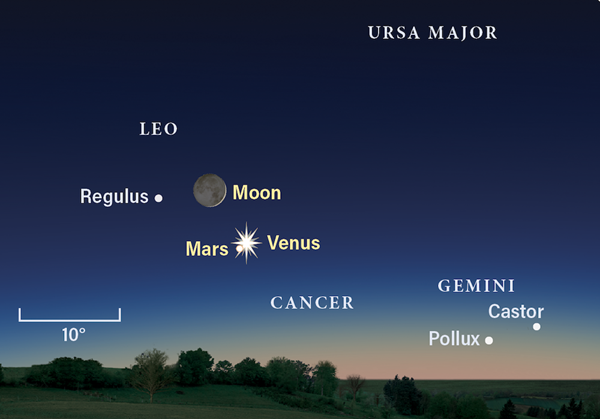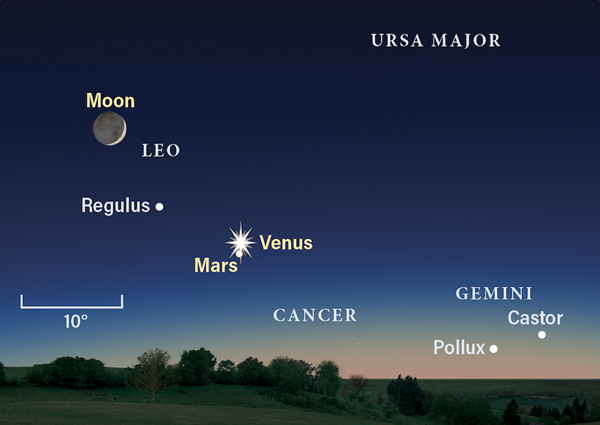The Moon’s thin crescent will hover near the planetary pair the two previous evenings, offering beautiful views to photographers with clear western skies. On the evening of the 11th, Venus will lie 5.5° southeast of the ultra-thin crescent Moon (5 percent illuminated), which will set about 90 minutes after the Sun. The planets themselves will appear just 1° apart, a distance that is nearly cut in half the following evening. On the 12th, Venus will stand just over 7° west of the 10-percent-illuminated Moon, which sets roughly two and a quarter hours after the Sun. Though the actual moment of closest approach occurs when the pair isn’t visible from the U.S., the evenings of both the 12th and 13th offer essentially the same separation — about 33′.
Where to look
On July 13th, the pair will become visible about 45 minutes after sunset, local time, low in the west. The two planets will initially stand 16° above the western horizon and then sink below it 1 hour and 42 minutes after the Sun.
You’ll probably spot Venus quite a bit earlier, too. It will be its usual brilliant self, shining at magnitude –3.9. Mars, unfortunately, will be quite a bit fainter, glowing at magnitude 1.8. That means Venus will be 190 times brighter than Mars, so you’ll have to let twilight fade some for you to be able to spot the Red Planet. Both objects will lie in the constellation Leo the Lion.
Past and future
The last conjunction between Venus and Mars occurred Aug. 24, 2019, when the separation between them was a bit closer: 24′. For that one, however, the planets were only 3° from the Sun, and, therefore, invisible.
The next Venus-Mars conjunction will occur Feb. 22, 2024. On that date, 38′ will separate the pair, which will lie in Capricornus in the morning sky, 26° west of the Sun. In order to see a pairing between Venus and Mars as close as the one this month, you’ll have to wait until May 11, 2034.
An easy catch
Close pairings of naked-eye planets aren’t rare, but occurrences this easy to see don’t happen all that often. And while the event on July 13 won’t feature the closest such pairing of objects, it will be easy for anyone with a clear sky to spot, mainly because Venus is involved. Even better, it takes place in the evening. Take this opportunity to be an ambassador for easy observing as you point out the two worlds to your family and friends.













